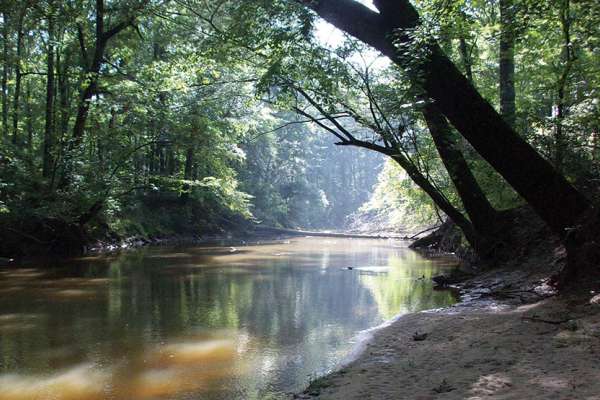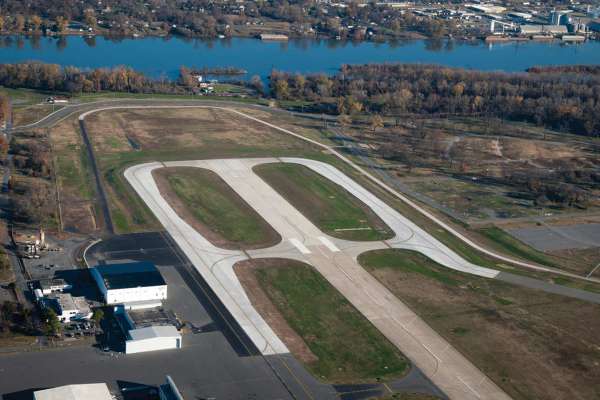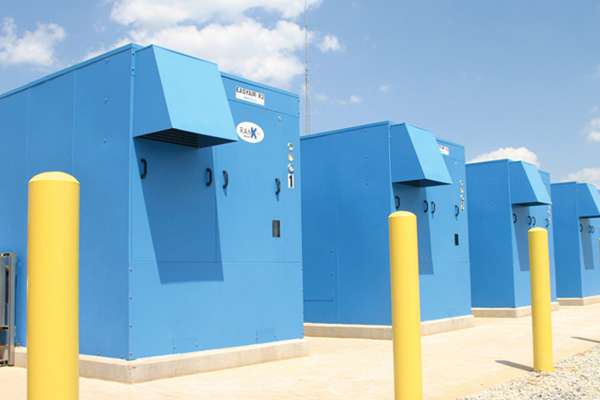Garver's specialization in airfield lighting
Century-old incandescent bulbs ruled airfield illumination for years, but light-emitting diodes (LED) are fast becoming the medium of choice. And with recent advancements in LED technology, including medium-intensity runway edge lights, airfields in the near future will feature LED-only lighting systems.
Airports are using LEDs to decrease operational costs, increase lighting system reliability and improve airfield visibility for pilots. Ever since the FAA certified LED taxiway edge lights in 2002, Garver has worked with airports, the FAA and lighting manufacturers to understand LEDs and specialize in their applications.
LED airfield lighting debuted less than a decade ago, and since then Garver has been at the forefront in researching LEDs and integrating their use in airfield designs. Garver employs an aviation-dedicated electrical design team that is innovative, progressive and works hard to tailor projects to fit airport needs and circumstances.
"Garver's design and construction staff has worked to identify field-proven products from manufacturers that guarantee the longevity and reliability desired in LED products," said Garver Electrical Engineering Resource Leader Eric Farmer, PE. "Our technical specifications are specifically written to ensure that only proven, FAA-certified, Buy American-approved LED products and systems are installed on FAA-funded projects. If our experience indicates problems with products from certain manufacturers, we inform the FAA's national engineering division of the possible issue and work with our client to find a solution, either through new equipment replacement or extended warranties on the item in question."
Garver is currently working on two of the first LED medium-intensity runway lighting systems in Arkansas and Oklahoma. Moreover, Garver has designed an airfield-wide LED project in Russellville, Ky., which began construction this winter. Russellville-Logan County Airport is aiming to become the state's first general aviation facility to fully illuminate its airfield with LEDs.
"We've studied how best to design an LED lighting system," said Garver electrical engineer Bart Gilbreath, PE, who recently made a presentation about advancements in airfield technology at the FAA Southwest Region Airports Division Conference. "This technology provides less maintenance and a longer life than traditional systems, but if the system is not correctly designed, constructed and installed, you're not going to get the ultimate benefits. Our electrical team specializes in aviation lighting systems, and we know this technology inside and out."
To illustrate the advantages of LED lamps, Garver has developed a portable lighting kit that powers both LED and incandescent taxiway edge lights and comparatively demonstrates voltage, current and illumination. While this exhibition can be convincing, it is Garver's success in LED lighting projects that best exemplifies LED advantages.
In 2008, Springdale Municipal Airport in Arkansas replaced more than 100 incandescent taxiway lights with LED fixtures to reduce energy consumption. Within a three-month period, the airport realized a 60-percent reduction in airfield energy usage.
"Not only are the LEDs brighter than our old lights, but we've saved money every month on our electric bill," said Springdale Airport Facilities Manager James Smith. "We haven't had to touch them since they were installed, and best of all, we've had pilots say that the LEDs make the field look like Christmas year round."
Earlier this year, Will Rogers World Airport in Oklahoma City, Okla. upgraded more than 800 quartz and incandescent taxiway edge lights with LEDs and installed more-efficient transformers. This project is expected to annually reduce energy consumption by more than 70,000 kilowatt hours and save $60,000 every year in energy, labor and maintenance costs.
"Capital projects often provide an opportunity to decrease energy consumption," said Mark Kranenburg, Oklahoma City Airports Trust director of airports. "This stimulus project allows us to decrease consumption and save dollars."
Garver will continue to monitor advancements in LED technology, including high-intensity runway edge lights, medium-intensity approach lighting systems and precision approach path indicators, which are expected to debut in the next few years.
Firsts
Garver has provided electrical services on numerous airport projects that led the way in new airfield LED technology.
2002 North Little Rock Municipal Airport: First LED taxiway edge lights in Arkansas 2008 Arkadelphia Municipal Airport: One of the first LED REILs in Arkansas 2009 Ada Municipal Airport: First LED airfield signs in Oklahoma 2009 Bill and Hillary Clinton National Airport: First LED runway guard lights in Arkansas 2011 Hollis Municipal Airport: Expected to be the first LED MIRLs in Oklahoma 2011 Paris Municipal Airport: Expected to be the first LED MIRLs in Arkansas 2011 Russellville-Logan County Airport: Expected to be the first all-LED airfield in Kentucky






Share this article